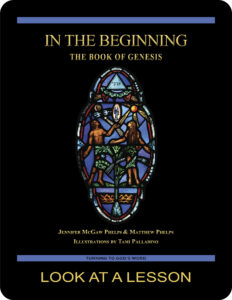temptation
 During the season of Lent, the Church shifts the focus of its readings to sin and repentance. In the Gospel According to Matthew 4:1–11 (NABRE), Jesus is led out into the desert to be tempted by Satan.
During the season of Lent, the Church shifts the focus of its readings to sin and repentance. In the Gospel According to Matthew 4:1–11 (NABRE), Jesus is led out into the desert to be tempted by Satan.
The Greek verb πειράξω (peirazo) means “to make proof or trial of” or “to tempt, try, put to the test.” When we think of temptation, we tend to view it in a negative sense as something the devil does to try to lead us into damnation. This is the message most people focus on in the early chapters of the book of Genesis, which describe Adam and Eve’s Fall in the Garden of Eden. In this Sunday’s reading, temptation also can be seen as a negative.
There’s a positive side, however. In resisting temptation, we demonstrate our devotion to God. Without temptation, we have no way of proving our love for God. Why do you think it is that God allowed Jesus to be tempted? In what areas of your life is your devotion to God being tested? What is this testing proving about you?
related topics: into test; prayer; sin; test
you also may like our study of the book of Genesis
 The first seven lessons of In the Beginning: The Book of Genesis, a 28-lesson Catholic Bible study with an imprimatur, provide an in-depth look at the very earliest biblical history—including the two accounts of Creation, events surrounding the Fall of Adam and Eve, the relationship between Cain and Abel, and the baptismal foreshadowing present in the account of Noah and the Flood. Remaining lessons look at lives of the patriarchs Abraham, Isaac, Jacob, and Joseph. Click on the book’s cover to view a sample lesson.
The first seven lessons of In the Beginning: The Book of Genesis, a 28-lesson Catholic Bible study with an imprimatur, provide an in-depth look at the very earliest biblical history—including the two accounts of Creation, events surrounding the Fall of Adam and Eve, the relationship between Cain and Abel, and the baptismal foreshadowing present in the account of Noah and the Flood. Remaining lessons look at lives of the patriarchs Abraham, Isaac, Jacob, and Joseph. Click on the book’s cover to view a sample lesson.
 Click on the picture of the statue of Moses with horns (above) to learn more about Lost in Translation. A new entry is archived each Monday. Contact us to receive Lost in Translation by email every week. You may use any of the contact links on our website to ask Matthew a question.
Click on the picture of the statue of Moses with horns (above) to learn more about Lost in Translation. A new entry is archived each Monday. Contact us to receive Lost in Translation by email every week. You may use any of the contact links on our website to ask Matthew a question.
